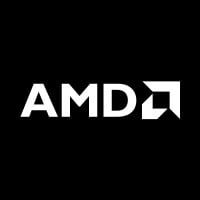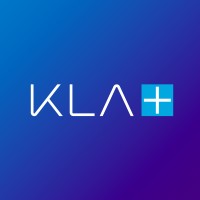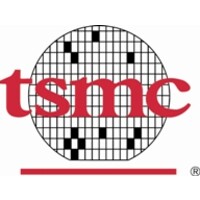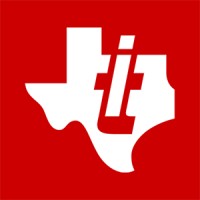Realtek Semiconductor Corp. Company Cyber Security Posture
realtek.comThrough strength, persistence, and adaptability, Realtek follows in the spirit of the crab. From establishment in 1987 by seven skilled and committed engineers, through several years of tough times, to today's success as a premier IC design house, Realtek has overcome numerous challenges to achieve consistent growth. We value our ability to foresee market trends and demands and to commit ourselves to technological innovation to meet those demands. We have positioned ourselves as designers and distributors of IC products developed through extensive research into market and customer needs. We recognize that the key to our success is in the value we provide to new technologies, products, applications, and markets. Employees are Realtek's most important asset, and as the pillars of a culture of confidence and trust, are recognized as the key to our success. Growing and optimistic individuals have demonstrated a positive impact on the company's growth. Realtek employees are empowered with authority and given freedom to make decisions to determine the best methods to approach issues. Employees are encouraged to develop freely and work autonomously, and are evaluated on ability and performance, under healthy and fair competition standards, allowing each individual to progress and achieve advanced corporate and personal goals. This philosophy has created a strong common identity and cohesiveness throughout Realtek, benefiting the pursuit of corporate success. In line with the Realtek culture of "Self-confidence and trust in people", we believe that we can achieve our best, and trust our colleagues can also do the same. Working and learning in Realtek, we openly share knowledge and experience with one another to inspire innovation and pursue growth of the company, as well the individuals.
RSC Company Details
realtek-semiconductor-corp.
2554 employees
20484.0
334
Semiconductor Manufacturing
realtek.com
Scan still pending
REA_3294462
In-progress
Between 800 and 900
This score is AI-generated and less favored by cyber insurers, who prefer the TPRM score.
 RSC Global Score
RSC Global Score.png)

Realtek Semiconductor Corp. Company Scoring based on AI Models
| Model Name | Date | Description | Current Score Difference | Score |
|---|---|---|---|---|
| AVERAGE-Industry | 03-12-2025 | This score represents the average cybersecurity rating of companies already scanned within the same industry. It provides a benchmark to compare an individual company's security posture against its industry peers. | N/A | Between 800 and 900 |
Realtek Semiconductor Corp. Company Cyber Security News & History
| Entity | Type | Severity | Impact | Seen | Url ID | Details | View |
|---|---|---|---|---|---|---|---|
| Realtek | Vulnerability | 25 | 6/2025 | REA739060225 | Link | ||
Rankiteo Explanation : Attack without any consequences: Attack in which data is not compromisedDescription: A high-severity vulnerability has been discovered in Realtek’s Bluetooth HCI Adaptor that allows local attackers to delete arbitrary files and potentially escalate privileges on affected systems. The vulnerability, tracked as CVE-2024-11857, was published to the GitHub Advisory Database and represents a significant security risk for systems utilizing Realtek Bluetooth hardware components. The flaw stems from a Link Following weakness classified under CWE-59 in the Common Weakness Enumeration database. This flaw enables local attackers with regular user privileges to exploit the Bluetooth HCI Adaptor’s file handling mechanisms through symbolic link manipulation. The attack vector requires minimal complexity and no user interaction, making it particularly concerning for security professionals. | |||||||
Realtek Semiconductor Corp. Company Subsidiaries

Through strength, persistence, and adaptability, Realtek follows in the spirit of the crab. From establishment in 1987 by seven skilled and committed engineers, through several years of tough times, to today's success as a premier IC design house, Realtek has overcome numerous challenges to achieve consistent growth. We value our ability to foresee market trends and demands and to commit ourselves to technological innovation to meet those demands. We have positioned ourselves as designers and distributors of IC products developed through extensive research into market and customer needs. We recognize that the key to our success is in the value we provide to new technologies, products, applications, and markets. Employees are Realtek's most important asset, and as the pillars of a culture of confidence and trust, are recognized as the key to our success. Growing and optimistic individuals have demonstrated a positive impact on the company's growth. Realtek employees are empowered with authority and given freedom to make decisions to determine the best methods to approach issues. Employees are encouraged to develop freely and work autonomously, and are evaluated on ability and performance, under healthy and fair competition standards, allowing each individual to progress and achieve advanced corporate and personal goals. This philosophy has created a strong common identity and cohesiveness throughout Realtek, benefiting the pursuit of corporate success. In line with the Realtek culture of "Self-confidence and trust in people", we believe that we can achieve our best, and trust our colleagues can also do the same. Working and learning in Realtek, we openly share knowledge and experience with one another to inspire innovation and pursue growth of the company, as well the individuals.
Access Data Using Our API

Get company history
.png)
RSC Cyber Security News
AMD launches new Tainan office
The US company's new office is in the Shalun Smart Green Energy Science City, a new AI industry base and cybersecurity hub in southern Taiwan.
Devices From Many Vendors Can Be Hacked Remotely Due to Flaws in Realtek SDK
A large number of IoT systems could be exposed to remote hacker attacks due to serious vulnerabilities found in software development kits (SDKs) ...
Cybersecurity warning: Realtek flaw exposes dozens of brands to supply chain attacks
A recently disclosed flaw in chipsets from Taiwanese semiconductor company Realtek is being targeted by a botnet based on the old IoT ...
Exploit out for critical Realtek flaw affecting many networking devices
Exploit code has been released for a critical vulnerability affecting networking devices with Realtek's RTL819x system on a chip (SoC), ...
Realtek Demos Full Range of Semiconductor Solutions at CES 2023
Realtek showcased its full range of PC, communications, consumer electronics, and automotive semiconductor solutions at CES 2023.
Experts Warn of New Windows Shortcut Flaw
Researchers have discovered a sophisticated new strain of malicious software that piggybacks on USB storage devices and leverages what ...
Someone's tried sneaking semiconductor secrets out of South Korea's patent office
South Korea announced new measures on Thursday to prevent future leaks of technology from its patent office, after noticing increasing ...
Understanding Code Signing Abuse in Malware Campaigns
Code signing is a very efficient technique in defending against malware, but as revealed in our research, it is not foolproof and can be abused.
'Extremely Alarming' Iran Talks Hack Used Foxconn Credentials
The Duqu 2.0 virus was linked to previous malware attacks, which also used stolen credentials from Asian hardware manufacturers.

RSC Similar Companies

AMD
We care deeply about transforming lives with AMD technology to enrich our industry, our communities, and the world. Our mission is to build great products that accelerate next-generation computing experiences – the building blocks for the data center, artificial intelligence, PCs, gaming and embedde

Lam Research
Lam Research Corp. (NASDAQ:LRCX) At Lam Research, we create equipment that drives technological advancements in the semiconductor industry. Our innovative solutions enable chipmakers to power progress in nearly all aspects of modern life, and it takes each member of our team to make it possible. A

KLA
KLA develops industry-leading equipment and services that enable innovation throughout the electronics industry. We provide advanced process control and process-enabling solutions for manufacturing wafers and reticles, integrated circuits, packaging and printed circuit boards. In close collaboration

TSMC
Established in 1987, TSMC is the world's first dedicated semiconductor foundry. As the founder and a leader of the Dedicated IC Foundry segment, TSMC has built its reputation by offering advanced and "More-than-Moore" wafer production processes and unparalleled manufacturing efficiency. From its in

Texas Instruments
We are a global semiconductor company that designs, manufactures and sells analog and embedded processing chips for markets such as industrial, automotive, personal electronics, enterprise systems and communications equipment. At our core, we have a passion to create a better world by making electro
NXP Semiconductors
We anticipate tomorrow’s needs—navigating a changing world by bringing together technology's brightest minds to build game-changing solutions that propel us forward. NXP Semiconductors N.V. (NASDAQ: NXPI) is the trusted partner for innovative solutions in the automotive, industrial & IoT, mobile, an

Frequently Asked Questions (FAQ) on Cybersecurity Incidents
RSC CyberSecurity History Information
Total Incidents: According to Rankiteo, RSC has faced 1 incidents in the past.
Incident Types: The types of cybersecurity incidents that have occurred include ['Vulnerability'].
Total Financial Loss: The total financial loss from these incidents is estimated to be {total_financial_loss}.
Cybersecurity Posture: The company's overall cybersecurity posture is described as Through strength, persistence, and adaptability, Realtek follows in the spirit of the crab. From establishment in 1987 by seven skilled and committed engineers, through several years of tough times, to today's success as a premier IC design house, Realtek has overcome numerous challenges to achieve consistent growth. We value our ability to foresee market trends and demands and to commit ourselves to technological innovation to meet those demands. We have positioned ourselves as designers and distributors of IC products developed through extensive research into market and customer needs. We recognize that the key to our success is in the value we provide to new technologies, products, applications, and markets. Employees are Realtek's most important asset, and as the pillars of a culture of confidence and trust, are recognized as the key to our success. Growing and optimistic individuals have demonstrated a positive impact on the company's growth. Realtek employees are empowered with authority and given freedom to make decisions to determine the best methods to approach issues. Employees are encouraged to develop freely and work autonomously, and are evaluated on ability and performance, under healthy and fair competition standards, allowing each individual to progress and achieve advanced corporate and personal goals. This philosophy has created a strong common identity and cohesiveness throughout Realtek, benefiting the pursuit of corporate success. In line with the Realtek culture of "Self-confidence and trust in people", we believe that we can achieve our best, and trust our colleagues can also do the same. Working and learning in Realtek, we openly share knowledge and experience with one another to inspire innovation and pursue growth of the company, as well the individuals..
Detection and Response: The company detects and responds to cybersecurity incidents through {description_of_detection_and_response_process}.
Incident Details
Incident 1: Ransomware Attack
Title: {Incident_Title}
Description: {Brief_description_of_the_incident}
Date Detected: {Detection_Date}
Date Publicly Disclosed: {Disclosure_Date}
Date Resolved: {Resolution_Date}
Type: {Type_of_Attack}
Attack Vector: {Attack_Vector}
Vulnerability Exploited: {Vulnerability}
Threat Actor: {Threat_Actor}
Motivation: {Motivation}
Incident 2: Data Breach
Title: {Incident_Title}
Description: {Brief_description_of_the_incident}
Date Detected: {Detection_Date}
Date Publicly Disclosed: {Disclosure_Date}
Date Resolved: {Resolution_Date}
Type: {Type_of_Attack}
Attack Vector: {Attack_Vector}
Vulnerability Exploited: {Vulnerability}
Threat Actor: {Threat_Actor}
Motivation: {Motivation}
Common Attack Types: As of now, the company has not encountered any reported incidents involving common cyberattacks.
Identification of Attack Vectors: The company identifies the attack vectors used in incidents through {description_of_identification_process}.
Impact of the Incidents
Incident 1: Ransomware Attack
Financial Loss: {Financial_Loss}
Data Compromised: {Data_Compromised}
Systems Affected: {Systems_Affected}
Downtime: {Downtime}
Operational Impact: {Operational_Impact}
Conversion Rate Impact: {Conversion_Rate_Impact}
Revenue Loss: {Revenue_Loss}
Customer Complaints: {Customer_Complaints}
Brand Reputation Impact: {Brand_Reputation_Impact}
Legal Liabilities: {Legal_Liabilities}
Identity Theft Risk: {Identity_Theft_Risk}
Payment Information Risk: {Payment_Information_Risk}
Incident 2: Data Breach
Financial Loss: {Financial_Loss}
Data Compromised: {Data_Compromised}
Systems Affected: {Systems_Affected}
Downtime: {Downtime}
Operational Impact: {Operational_Impact}
Conversion Rate Impact: {Conversion_Rate_Impact}
Revenue Loss: {Revenue_Loss}
Customer Complaints: {Customer_Complaints}
Brand Reputation Impact: {Brand_Reputation_Impact}
Legal Liabilities: {Legal_Liabilities}
Identity Theft Risk: {Identity_Theft_Risk}
Payment Information Risk: {Payment_Information_Risk}
Average Financial Loss: The average financial loss per incident is {average_financial_loss}.
Commonly Compromised Data Types: The types of data most commonly compromised in incidents are {list_of_commonly_compromised_data_types}.
Incident 1: Ransomware Attack
Entity Name: {Entity_Name}
Entity Type: {Entity_Type}
Industry: {Industry}
Location: {Location}
Size: {Size}
Customers Affected: {Customers_Affected}
Incident 2: Data Breach
Entity Name: {Entity_Name}
Entity Type: {Entity_Type}
Industry: {Industry}
Location: {Location}
Size: {Size}
Customers Affected: {Customers_Affected}
Response to the Incidents
Incident 1: Ransomware Attack
Incident Response Plan Activated: {Yes/No}
Third Party Assistance: {Yes/No}
Law Enforcement Notified: {Yes/No}
Containment Measures: {Containment_Measures}
Remediation Measures: {Remediation_Measures}
Recovery Measures: {Recovery_Measures}
Communication Strategy: {Communication_Strategy}
Adaptive Behavioral WAF: {Adaptive_Behavioral_WAF}
On-Demand Scrubbing Services: {On_Demand_Scrubbing_Services}
Network Segmentation: {Network_Segmentation}
Enhanced Monitoring: {Enhanced_Monitoring}
Incident 2: Data Breach
Incident Response Plan Activated: {Yes/No}
Third Party Assistance: {Yes/No}
Law Enforcement Notified: {Yes/No}
Containment Measures: {Containment_Measures}
Remediation Measures: {Remediation_Measures}
Recovery Measures: {Recovery_Measures}
Communication Strategy: {Communication_Strategy}
Adaptive Behavioral WAF: {Adaptive_Behavioral_WAF}
On-Demand Scrubbing Services: {On_Demand_Scrubbing_Services}
Network Segmentation: {Network_Segmentation}
Enhanced Monitoring: {Enhanced_Monitoring}
Incident Response Plan: The company's incident response plan is described as {description_of_incident_response_plan}.
Third-Party Assistance: The company involves third-party assistance in incident response through {description_of_third_party_involvement}.
Data Breach Information
Incident 2: Data Breach
Type of Data Compromised: {Type_of_Data}
Number of Records Exposed: {Number_of_Records}
Sensitivity of Data: {Sensitivity_of_Data}
Data Exfiltration: {Yes/No}
Data Encryption: {Yes/No}
File Types Exposed: {File_Types}
Personally Identifiable Information: {Yes/No}
Prevention of Data Exfiltration: The company takes the following measures to prevent data exfiltration: {description_of_prevention_measures}.
Handling of PII Incidents: The company handles incidents involving personally identifiable information (PII) through {description_of_handling_process}.
Ransomware Information
Incident 1: Ransomware Attack
Ransom Demanded: {Ransom_Amount}
Ransom Paid: {Ransom_Paid}
Ransomware Strain: {Ransomware_Strain}
Data Encryption: {Yes/No}
Data Exfiltration: {Yes/No}
Ransom Payment Policy: The company's policy on paying ransoms in ransomware incidents is described as {description_of_ransom_payment_policy}.
Data Recovery from Ransomware: The company recovers data encrypted by ransomware through {description_of_data_recovery_process}.
Regulatory Compliance
Incident 1: Ransomware Attack
Regulations Violated: {Regulations_Violated}
Fines Imposed: {Fines_Imposed}
Legal Actions: {Legal_Actions}
Regulatory Notifications: {Regulatory_Notifications}
Incident 2: Data Breach
Regulations Violated: {Regulations_Violated}
Fines Imposed: {Fines_Imposed}
Legal Actions: {Legal_Actions}
Regulatory Notifications: {Regulatory_Notifications}
Regulatory Frameworks: The company complies with the following regulatory frameworks regarding cybersecurity: {list_of_regulatory_frameworks}.
Ensuring Regulatory Compliance: The company ensures compliance with regulatory requirements through {description_of_compliance_measures}.
Lessons Learned and Recommendations
Incident 1: Ransomware Attack
Lessons Learned: {Lessons_Learned}
Incident 2: Data Breach
Lessons Learned: {Lessons_Learned}
Incident 1: Ransomware Attack
Recommendations: {Recommendations}
Incident 2: Data Breach
Recommendations: {Recommendations}
Key Lessons Learned: The key lessons learned from past incidents are {list_of_key_lessons_learned}.
Implemented Recommendations: The company has implemented the following recommendations to improve cybersecurity: {list_of_implemented_recommendations}.
References
Additional Resources: Stakeholders can find additional resources on cybersecurity best practices at {list_of_additional_resources}.
Investigation Status
Incident 1: Ransomware Attack
Investigation Status: {Investigation_Status}
Incident 2: Data Breach
Investigation Status: {Investigation_Status}
Communication of Investigation Status: The company communicates the status of incident investigations to stakeholders through {description_of_communication_process}.
Stakeholder and Customer Advisories
Incident 1: Ransomware Attack
Stakeholder Advisories: {Stakeholder_Advisories}
Customer Advisories: {Customer_Advisories}
Incident 2: Data Breach
Stakeholder Advisories: {Stakeholder_Advisories}
Customer Advisories: {Customer_Advisories}
Advisories Provided: The company provides the following advisories to stakeholders and customers following an incident: {description_of_advisories_provided}.
Initial Access Broker
Incident 1: Ransomware Attack
Entry Point: {Entry_Point}
Reconnaissance Period: {Reconnaissance_Period}
Backdoors Established: {Backdoors_Established}
High Value Targets: {High_Value_Targets}
Data Sold on Dark Web: {Yes/No}
Incident 2: Data Breach
Entry Point: {Entry_Point}
Reconnaissance Period: {Reconnaissance_Period}
Backdoors Established: {Backdoors_Established}
High Value Targets: {High_Value_Targets}
Data Sold on Dark Web: {Yes/No}
Monitoring and Mitigation of Initial Access Brokers: The company monitors and mitigates the activities of initial access brokers through {description_of_monitoring_and_mitigation_measures}.
Post-Incident Analysis
Incident 1: Ransomware Attack
Root Causes: {Root_Causes}
Corrective Actions: {Corrective_Actions}
Incident 2: Data Breach
Root Causes: {Root_Causes}
Corrective Actions: {Corrective_Actions}
Post-Incident Analysis Process: The company's process for conducting post-incident analysis is described as {description_of_post_incident_analysis_process}.
Corrective Actions Taken: The company has taken the following corrective actions based on post-incident analysis: {list_of_corrective_actions_taken}.
Additional Questions
General Information
Ransom Payment History: The company has {paid/not_paid} ransoms in the past.
Last Ransom Demanded: The amount of the last ransom demanded was {last_ransom_amount}.
Last Attacking Group: The attacking group in the last incident was {last_attacking_group}.
Incident Details
Most Recent Incident Detected: The most recent incident detected was on {most_recent_incident_detected_date}.
Most Recent Incident Publicly Disclosed: The most recent incident publicly disclosed was on {most_recent_incident_publicly_disclosed_date}.
Most Recent Incident Resolved: The most recent incident resolved was on {most_recent_incident_resolved_date}.
Impact of the Incidents
Highest Financial Loss: The highest financial loss from an incident was {highest_financial_loss}.
Most Significant Data Compromised: The most significant data compromised in an incident was {most_significant_data_compromised}.
Most Significant System Affected: The most significant system affected in an incident was {most_significant_system_affected}.
Response to the Incidents
Third-Party Assistance in Most Recent Incident: The third-party assistance involved in the most recent incident was {third_party_assistance_in_most_recent_incident}.
Containment Measures in Most Recent Incident: The containment measures taken in the most recent incident were {containment_measures_in_most_recent_incident}.
Data Breach Information
Most Sensitive Data Compromised: The most sensitive data compromised in a breach was {most_sensitive_data_compromised}.
Number of Records Exposed: The number of records exposed in the most significant breach was {number_of_records_exposed}.
Ransomware Information
Highest Ransom Demanded: The highest ransom demanded in a ransomware incident was {highest_ransom_demanded}.
Highest Ransom Paid: The highest ransom paid in a ransomware incident was {highest_ransom_paid}.
Regulatory Compliance
Highest Fine Imposed: The highest fine imposed for a regulatory violation was {highest_fine_imposed}.
Most Significant Legal Action: The most significant legal action taken for a regulatory violation was {most_significant_legal_action}.
Lessons Learned and Recommendations
Most Significant Lesson Learned: The most significant lesson learned from past incidents was {most_significant_lesson_learned}.
Most Significant Recommendation Implemented: The most significant recommendation implemented to improve cybersecurity was {most_significant_recommendation_implemented}.
References
Most Recent Source: The most recent source of information about an incident is {most_recent_source}.
Most Recent URL for Additional Resources: The most recent URL for additional resources on cybersecurity best practices is {most_recent_url}.
Investigation Status
Current Status of Most Recent Investigation: The current status of the most recent investigation is {current_status_of_most_recent_investigation}.
Stakeholder and Customer Advisories
Most Recent Stakeholder Advisory: The most recent stakeholder advisory issued was {most_recent_stakeholder_advisory}.
Most Recent Customer Advisory: The most recent customer advisory issued was {most_recent_customer_advisory}.
Initial Access Broker
Most Recent Entry Point: The most recent entry point used by an initial access broker was {most_recent_entry_point}.
Most Recent Reconnaissance Period: The most recent reconnaissance period for an incident was {most_recent_reconnaissance_period}.
Post-Incident Analysis
Most Significant Root Cause: The most significant root cause identified in post-incident analysis was {most_significant_root_cause}.
Most Significant Corrective Action: The most significant corrective action taken based on post-incident analysis was {most_significant_corrective_action}.
What Do We Measure?
















Every week, Rankiteo analyzes billions of signals to give organizations a sharper, faster view of emerging risks. With deeper, more actionable intelligence at their fingertips, security teams can outpace threat actors, respond instantly to Zero-Day attacks, and dramatically shrink their risk exposure window.
These are some of the factors we use to calculate the overall score:
Identify exposed access points, detect misconfigured SSL certificates, and uncover vulnerabilities across the network infrastructure.
Gain visibility into the software components used within an organization to detect vulnerabilities, manage risk, and ensure supply chain security.
Monitor and manage all IT assets and their configurations to ensure accurate, real-time visibility across the company's technology environment.
Leverage real-time insights on active threats, malware campaigns, and emerging vulnerabilities to proactively defend against evolving cyberattacks.




